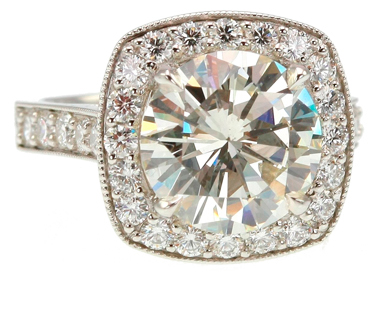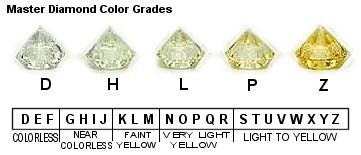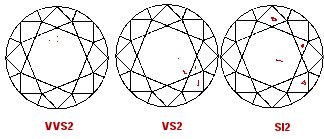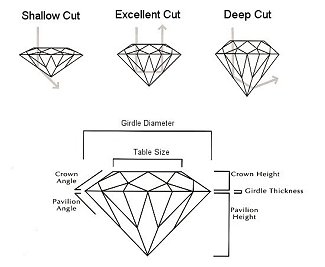The 5 C's of Diamonds

Anyone who is shopping for a diamond will hear about the 4C's - color, clarity, carat weight, and cut - the four characteristics that determine a diamond's rarity and value,. Understanding them can help you understand why diamonds of equal size may not be of equal value. It's the synergy and the many different ways that each of the 4C's can be combined that is the key to understanding what makes each diamond unique and valuable.
We have added a 5th C - please read on to learn why this is important.
Color
While most diamonds appear to be white, virtually all have slight traces of color. Evaluating a diamond's color for grading purposes is done by measuring the degree to which a diamond approaches colorlessness. Gemologists and jewelers describe the color of diamonds on a letter scale beginning with D (colorless) and moving through the alphabet to Z. The degree of colorlessness is not easily discernible to the untrained eye. D, E and F color grades are more expensive because they are more rare. However, well cut diamonds with good clarity of all color grades can be equally dazzling as it is the interplay of the 4C's which determines each individual stone's unique beauty. Deeply colored diamonds in shades such as pink, blue, and yellow are known as "fancies" and are especially rare and valuable.


Clarity
Practically all diamonds contain naturally occurring internal blemishes called inclusions, or a diamond's natural birth marks (these can look like tiny crystals, feathers, or clouds). However, many are microscopic in nature and can only be glimpsed under powerful magnification through a standard 10-power jeweler's microscope. Diamonds with the fewest inclusions are graded as VVS1 or VVS2; those on the other end of the scale are graded I1 to I3. The fewer inclusions, the rarer the stone.
| FL,IF |
Flawless: No internal or external flaws Internally Flawless: No internal flaws |
|---|---|
| VVS1, VVS2 | Very Very Slightly Included: Very difficult to see inclusions with 10x magnification |
| VS1, VS2 | Very Slightly Included: Inclusions are not typically visible to the unaided eye |
| SI1, SI2 | Slightly Included: Inclusions are visible under 10x magnification and may be visible with the unaided eye |
| I1, I2, I3 | Included: Inclusions are visible with the unaided eye |

Carat Weight
Carat weight indicates the size of the diamond. One carat weighs 0.2 grams, or 1/142 of an ounce. Jewelers, however refer to stones using points: 100 points equal 1 carat; 50 points equal a half-carat; 25 points equals a quarter carat and so on.
Cut
Cut is perhaps the most important of the 4C's because a quality cut is what helps to unleash a diamond's fiery sparkle. A well cut diamond, regardless of shape, releases the fire and brilliance of a diamond through the proportion of its 58 facets ( tiny planes that create angles), allowing the maximum amount of light to be reflected through the diamond. In order to maximize this fire and brilliance, a diamond cutter must place each of the stone's facets and angles, which act as light dispersing mirrors, in exact geometric relation to one another. Diamonds that are not cut to proper proportions (too deep or too shallow ) lose light that leaks through the side or bottom.

Cut is also quite different than shape. While cut is a technical quality, determined by the skill of the diamond cutter, the matter of shape is a personal choice. The round brilliant is often the most popular of all shapes, with the majority of brides receiving a round stone. Other popular traditional shapes include the princess cut, oval, emerald cut, radiant cut, marquise, pear, and heart shape.


Confidence - The 5th C
The unspoken 5th C: Confidence in the person you are working with and the certificate verifying your purchase. This may be the most important of all the C's. Whoever you are working with should instill a feeling of trust and confidence in you. The certificate should be valued in the marketplace (to protect your investment). We recommend the GIA or AGS certificates whenever possible. The certificate should be verified for accuracy by a third party as soon as possible. Jewelers have sold the correct diamond but given the wrong certificate (Clerical error on part of seller). You should feel free to ask any and all questions you may have from the person you are buying from. If you do not trust the person with whom you are working, you should find someone else to be your appraiser or jeweler.